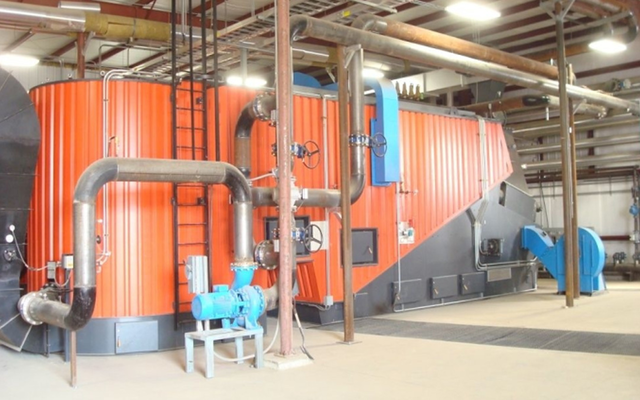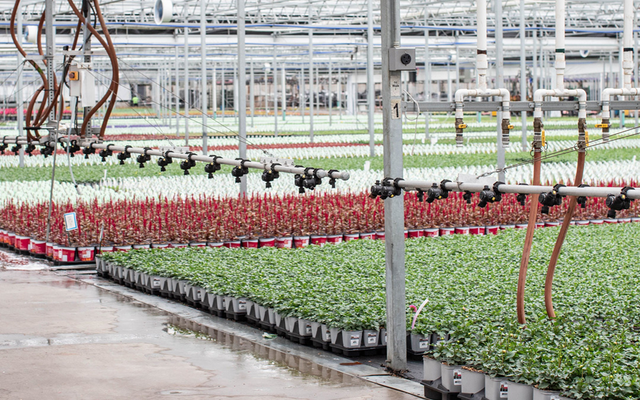An 18-acre greenhouse in Somers, Conn., has reduced its annual heating costs by 70 percent by switching out its old oil burners for a new biomass boiler system. During the process, the family-owned company has learned a great deal about the wood fuel supply chain.
Grower Direct Farms, which is one of the larger greenhouse companies in New England, received a $500,000 grant from the USDA Renewable Energy for America Program and an $850,000 loan guarantee to replace the six oil burners it previously used to heat its greenhouses. The system was fired up in 2009.
General Manager Sam Smith said the company initially evaluated switching to natural gas, but it was not accessible. “Not even close,” he said. “The nearest pipeline is on the other end of town, so it wasn’t an option.”
What gave the company confidence in biomass were evaluations of other greenhouses that were already successfully doing so. “We have some cousins outside of Cleveland who got going first—we are part of a larger family that own and operate several greenhouses across the country—by installing a biomass boiler, and we watched them work through some of the technical challenges and work the bugs out,” Smith said.
Another family greenhouse outside of Chicago began to head in that same direction, and Smith said watching those projects play out helped Grower Direct Farms understand what some of the challenges were, and it also helped with equipment selection.
Because a small, family business typically can’t afford to bring in costly consultants to project what local fuel prices will do, Smith said the company used common sense in determining its fuel supply. “We know some people who own land clearing operations that have been long-time acquaintances of ours, and we also know several power plants operating to the north of us that operate on wood chips, so we knew there was some great supplies here,” he said.
What the company didn’t fully understand, however, was how much effort was required in getting the kind of chips it desired. “Previously, we burned No. 2 fuel oil, and we simply called and the truck came and filled the tank,” Smith said. “The computer tells the boiler to fire and heat a certain house and you don’t spend a lot of time working with the system. We were expecting our supplier to deliver a ready-to-burn chip.”
Grower Direct Farms found out that almost everyone taking in wood chips is processing them in some way, allowing for much more flexibility in regard to what they can accept. “We were fortunate in that our supplier was able to work with us,” Smith said. “He modified some of his equipment and started chipping material with us in mind, stockpiling material he knew we could take. Instead of buying and routing it when we need it, we buy it when he makes it. That gives us greater control over what the product looks like.”
Luckily, because of Grower Direct Farms’ close relationship and proximity to its supplier, it is only required to have enough space for a couple of days worth of fuel. “They can run two trucks here each day and we don’t have to stockpile and devote a bunch of space to that,” he said. “Others that we know of have to stockpile massive amounts of fuel.”
Grower Direct Farms requires about 12,000 tons of wood chips annually, according to Smith.
Biomass heating is a wise decision for greenhouses that face the growing challenges of the north, he added. “It’s not a good investment for someone in Alabama because heat has to be a certain percentage of your business in terms of input cost, but after you’ve optimized your facility in every other way, it is a sound choice.”
ORIGINAL ARTICLE FOUND HERE







